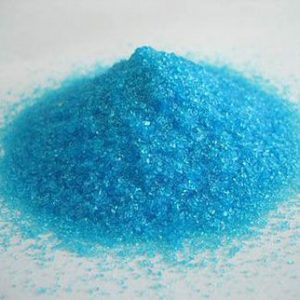Cupric and cuprous chloride is a very rare mineral tolbachite and the dehydrate eriochalcite, which are found near fumaroles and is a precursor to the fungicide copper oxychloride. Copper chloride is prepared commercially by the action of chlorination of copper and also generated by treatment of the hydroxide, oxide, or copper carbonate with hydrochloric acid. Globally, Development in the field of biotechnology, rise in the demand for agrochemicals to protect the crops from insect and pest infestation, and increasing agricultural activities in Asian countries are the prime growth drivers of global cupric and cuprous chloride market. In addition, increase in adoption of bio based variants cupric and cuprous chloride for applications, and emerging economies such as China, India and others, will create new opportunities for global cupric and cuprous chloride market.
Related Projects:- Chemicals (Organic, Inorganic, Industrial) Projects

Regional Growth of Cupric and Cuprous Chloride:
There is high global demand for cupric chloride owing to is extensive applications. Asia Pacific accounts for the largest market for cupric chloride. Growing textile and dyestuff industries in the region have fueled up the demand for this compound. Moreover the major manufacturers have shifted their production units to Asia Pacific owing to low production cost and cheap labor. Due to these factors, Asia Pacific has emerged as the largest manufacturer as well of cupric chloride. Economies in Asia Pacific such as China, Japan, South Korea and Taiwan are the dominating players in the market.
Related Videos:- Chemicals (Organic, Inorganic, Industrial)
Cupric chloride market is also emerging considerably in India owing to the growing textile and chemical industries in the country. Rest of the World region is the second fastest growing market for this compound. Textile and handloom industry in emerging economies of South America, such as Brazil, Chile, Peru and Argentina, is well established and boosting the demand for cupric chloride. The market for the cupric chloride in Europe and North America is growing despite the sluggish economic growth in these regions. This is primarily because of the well-established manufacturing and chemical industries in these developed regions. North America and Europe hosts the laboratories and manufacturing units of some of the largest chemical and pharmaceutical industries, where cupric chloride is used as a reagent.
Reasons of Growth in Cupric Chloride:

Related Books:- Chemical Technology (Organic, Inorganic, Industrial), Fine Chemicals
Cupric chloride is an effective oxidizing agent in presence of stronger reducing agents. The oxidizing nature of cupric chloride is put to use in the industrial preparation of chlorine gas from hydrochloric acid. Copper metal has both primary and secondary valences hence it is capable of forming coordinate bond. Due to this property, copper is a used as a catalyst in several organic and inorganic reactions. Catalytic and oxidizing properties of copper are driving the demand for cupric chloride as laboratory reagents. It is used as a catalyst in the industrial synthesis of several important chemical intermediates such as diols and vinyl sulfones. Cupric chloride is extensively used in the textile and printing industry as a mordant, which is an intermediary substance used to set dyes on fabric and paper by forming coordinating complex with the dyes. The glass and ceramic industry also uses cupric chloride as a mordant for effective designing. Due to the presence of chlorine, this compound is a disinfectant and is also used as a food preservative, herbicide, insecticide and fungicide.
Conclusion:
The Niir Project Consultancy Services (NPCS) provide detailed project reports, Books, Business Plan for Manufacturing Plant, Start-up Ideas, and Business Ideas for Entrepreneurs, etc. You can also get the detailed project report on “Cupric chloride” all the project reports give reliable data on analysis of market, confirming availability of various necessities such as plant & machinery, raw materials to forecasting the financial requirements.